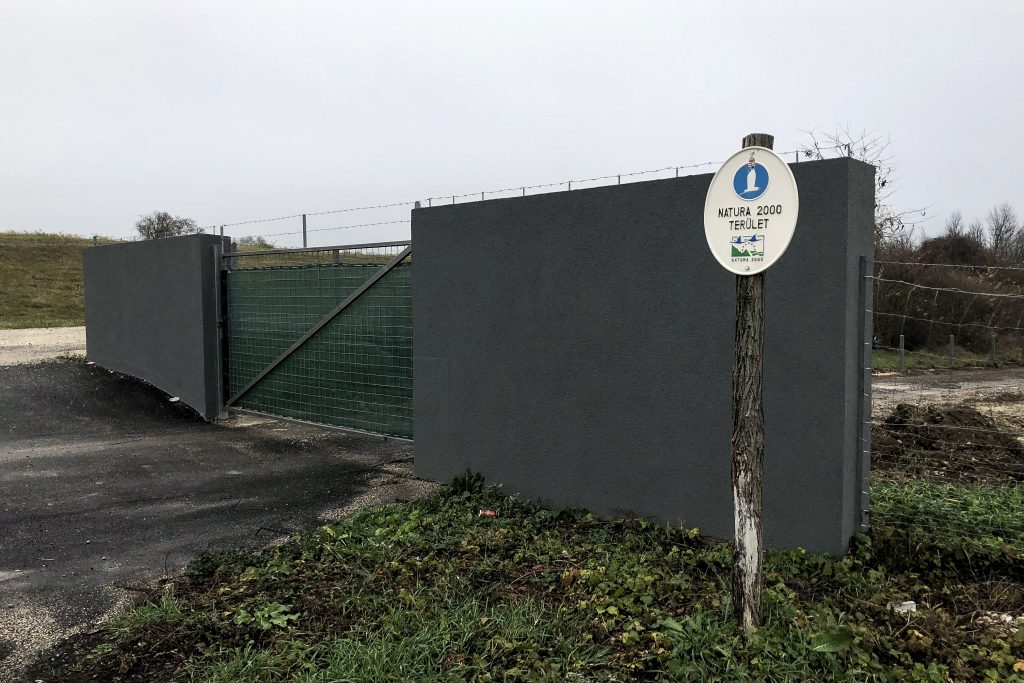The https://english.atlatszo.hu use cookies to track and profile customers such as action tags and pixel tracking on our website to assist our marketing. On our website we use technical, analytical, marketing and preference cookies. These are necessary for our site to work properly and to give us inforamation about how our site is used. See Cookies Policy
Authorities are overlooking construction works in protected area near Budakeszi
Brutal destruction of a protected natural area is taking place outside the town of Budakeszi according to local activists who have launched a petition and are organising a protest. Construction works have recently started in Álomvölgy (Dream Valley) which is home to protected animal and plant species, and is a listed, „Natura 2000” site. In 2017 a construction ban was imposed by the local government on the protected area. The owners of the site say there is no violation of the law, they are only drilling a well under an earlier and valid permit, though they admit that they want to apply for a building permit when the current ban is lifted. The municipality of Budakeszi has asked for help from the police, the prosecutor’s office and the environmental authorities, but to no avail. We filmed the protected site with a drone.

Álomvölgy is an important nature conservation area of European importance, part of the Natura 2000 network, on the border of the towns of Budakeszi and Budaörs. There are highly protected plant and animal species here, many of which occur only in Hungary. There is a special rock formation, the so-called “Hive Stone” (Kaptárkő) which is protected as part of the cultural heritage.
According to a local NGO called the “Guardians of Dream Valley”, this area is at risk now, despite the multiple level protection, as it is explained in the activists’ press release:
“The owners of this area, privatized one day before the change of regime (in 1990), started the construction of a number of luxury dwellings called “sheperds’s flats” here through thwarting local regulations and going against Hungarian environmental rules and EU directives, despite the fact that the owners do not possess a building permit and the local government of Budakeszi had issued a construction ban for this area until May 2020. In 2016 somebody had dug out the roots of protected flower species, and recently the destruction of the listed „Hives Stones” began with excavators working on the ancient rock formation to gain dolomite to be used for road building here. In previous years during film shootings the protected lawn was damaged by the construction of temporary buldings and by hundreds of people and vehicles moving around. The local stream was diverted even though it is part of the National Ecological Network.”
In 2001 local inhabitants expressed through a referendum that they did not want to see the Álomvölgy area built in.
Today Álomvölgy is owned by two businessmen, Antal Baumgartner and István Takács.
Baumgartner, also the owner of Renault Baumgartner Kft. became widely known as the country’s first car importer at the time of the regime change. He told Atlatszo that they are drilling the well because they will need the water at the “microfarms” to be built in the area. According to Baumgartner, the construction ban imposed by the Budakeszi Municipality in 2017 does not invalidate their well drilling permit issued in 2016. Next spring, when the change ban expires, they will apply for a building permit, he added.
However, our drone video recorded over the weekend shows that the works underway look more serious than a simple well drilling:
A hatóságok tétlenül nézik a természetvédelmi terület beépítését a Budakeszi Álomvölgyben from atlatszo.hu on Vimeo.
In Álomvölgy, under the current building code, only agricultural properties can be authorized, and activists also point out that, under the law, an investment in a nature conservation area is only acceptable following an impact assessment, and if it does not have significant negative impact on the listed species and habitat. Those opposing the constructions in Álomvölgy claim that previous official procedures have not been able to guarantee this.
Atlatszo has received the minutes of the on-site inspection by the Danube-Ipoly National Park on October 4th and 7th, as well as the letter sent by the National Park to the Pest County Government Office (PDF). From these, it appears that in the recent past, electric and water pipes have been laid in the protected area and ditches have been dug for them. Tree felling and shrubbing also took place.
According to the National Park’s statement “these disturbances have also affected the habitat of protected species.”
However, as long as there is a ban on constructions, not only the laying of cables is prohibited, but even a fence should not be built in the area. The municipality of Budakeszi repeatedly carried out on-site inspections, but because of its lack of authority, the relevant government office and environment protection authority were contacted, the National Park was notified and a police report was made.
But so far they have not received a response from these authorities, and in fact, when asked by Atlatszo, they said the National Park did not even inform the city authorities of the inspections they had carried out.
Bernadett Szél, an independent Member of Parliament, and Beáta Hegyesi, Board Member of opposition party Párbeszéd, both reported the case to the police. The Budaörs police closed the first investigation stating that the construction of a fence was not subject to licensing, even in a Natura 2000 protected area, and that there was no “significant change” in the habitat or habitat of living organisms in the area in question.
Hegyesi then turned to the Budaörs Public Prosecutor’s Office, where her complaint was upheld and the police were ordered to continue the inevstigation. However, since then no further developments have been reported on this procedure.
Some locals believe that the passivity of the authorities may be due to “higher” contacts supporting the owners’ plans.
“The Member of Parliament considers it legal to build farmhouses. The county government office authorizes the developments on the land during the construction ban and they do not investigate the raising of a fence. The environmental authority does not object to the physical demarcation of the protected area. This is not a small project for private owners, but for someone else who can manipulate every level of the government.”
This blog also draws attention to the fact that in 2018, the county government office allowed the division of the land despite the construction ban being in force, even though according to them this would be allowed in very specific cases, such as finishing already started construction works or keeping up the former use.
In May, another local blog wrote that the area’s owners had offered a deal to the municipality: they would return the environmentally most valuable part of Álomvölgy to the city, but in return would ask for concessions on the site’s construction. The municipality then ordered an impact assessment (PDF) of the protected area and performed an on-site visit (PDF).
Local NGOs have launched a petition to save the nature reserve and they are holding a protest on Saturday.
Atlatszo asked the Danube-Ipoly National Park what they know about the ongoing works in Álomvölgy, and what the enviromental inspection found there in early November. We have not received their response yet to our questions.
Written by Gabriella Horn, done video by Daniel Németh. You can read the more detailed Hungarian version of this article here.


